Key Elements
- European brown bears are extinct in the U.K.
- Conservation efforts have reintroduced European brown bears to the U.K. as a way to repopulate the species in the region.
- The Bear Wood Program in Bristol, England is working with the British Zoological Society to reintroduce several extinct animals in the region through breeding programs and update conservation laws.
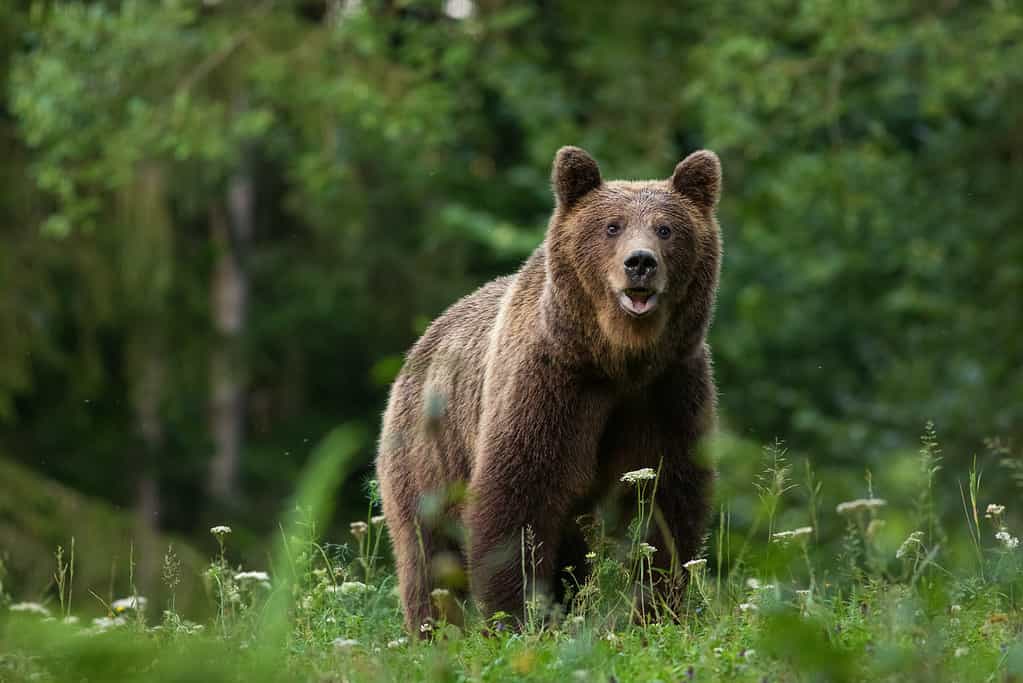
Brown bears are omnivores that feed on berries, plants, and small animals to sustain their bulky bodies.
©DrDjJanek/iStock via Getty Images
Most people have a soft spot for bears. They have cute round ears, adorable long snouts, and a fierce method of combat. Bears are personifications of both motherly care and pure strength.
Sadly, as a result of increasing human populations, bear populations are in decline due to habitat loss from deforestation and urbanization. Bear populations are dwindling around the world, and they’ve even gone extinct in certain regions.
This article discusses the bear populations that once lived in the United Kingdom and what is currently being done to reintroduce them and aid in their conservation.
Do Bears Live in the U.K.?
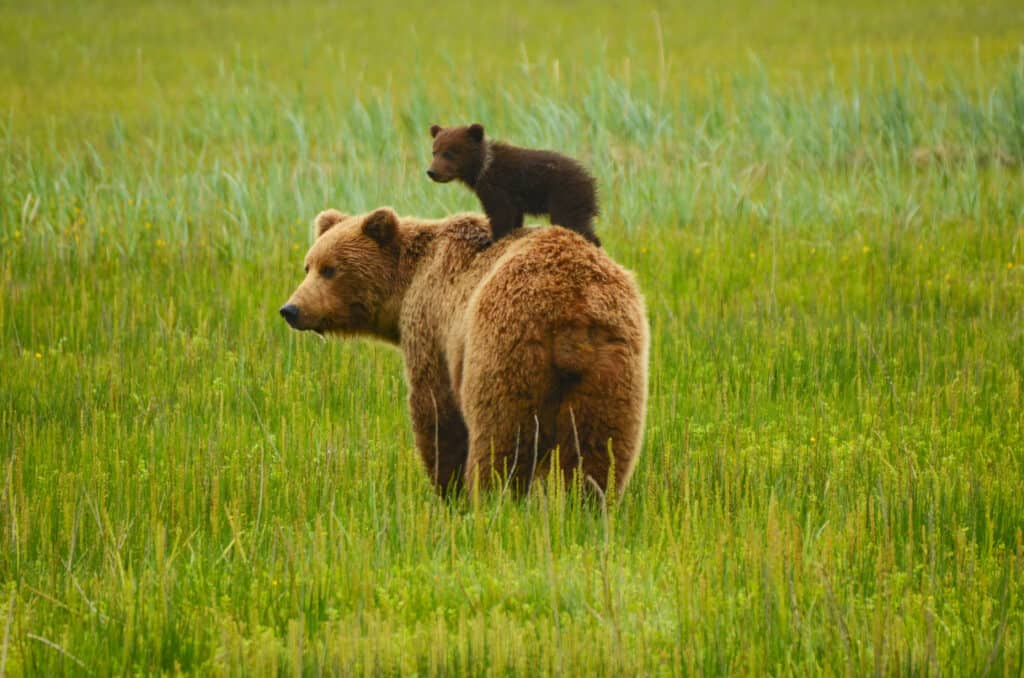
In the U.K., no brown bears live in the wild, but there are efforts to bring the species back.
©David Rasmus/Shutterstock.com
No wild bears roam the forests of the U.K. any longer. The native bear population went extinct around the 11th century during the Middle Ages. However, bears are returning to the region thanks to wildlife programs.
What Bears Lived in the U.K.?
Ursus arctos arctos, or the European brown bear, was the only species of bear living in the U.K. It weighed approximately 300-860 pounds and stood between 5-9.2 feet tall. They can live up to 20-30 years and have a top speed of 35 miles per hour.
Brown bears are omnivores, meaning they are capable of deriving nutrition from both plants and animals. In the U.K., these brown bears feed on plants, berries, fish, and small animals. European brown bears use their long claws to dig for food, catch prey, and pick fruits from trees and thorn bushes.
Though they no longer exist in the U.K., they reside across Asia as the Eurasian brown bear.
Where Do Eurasian Brown Bears Live?
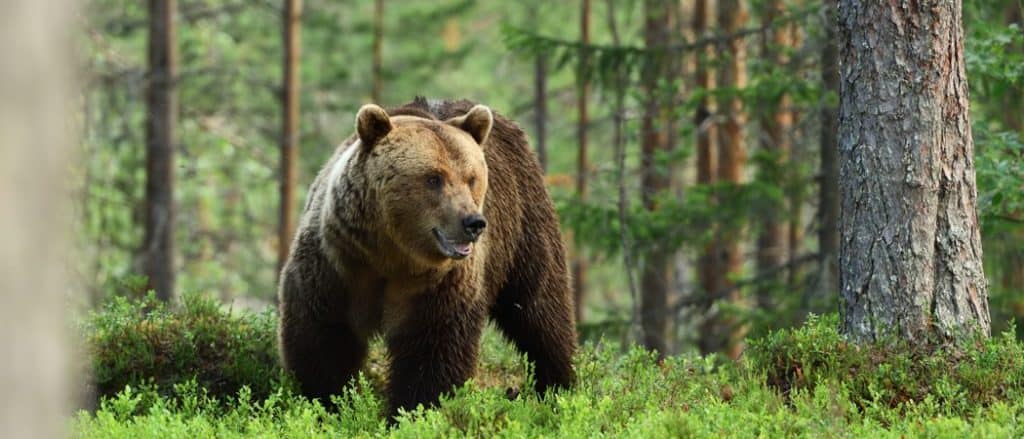
Brown bears are native to mountainous woodlands across Europe and Asia.
©Erik Mandre/Shutterstock.com
Eurasian brown bears have a healthy population spanning across Northern Eurasia. Records indicate over 100,000 brown bears are living in Russia, with 17,000 brown bears across Europe.
The largest population of Eurasian brown bears resides in the Carpathian Mountains in Romania. An estimated 5,000-6,000 brown bears are living comfortably in the forests near the mountains.
Bears inhabit these mountain woodlands across Europe:
- Cantabrian Mountains, Spain
- The Alps in Switzerland, Austria, and Slovenia
- Apennine Mountains, Italy
- The Balkans in Croatia and Slovenia
The Eurasian brown bear is currently a “least concerned species” thanks to wildlife protection laws. However, certain variants of the brown bear are endangered due to human encroachment.
Why Did Bears Go Extinct in the U.K.?
During the Middle Ages, humans expanded their civilizations to accommodate more people. They cut down large sections of forests, reducing European brown bear habitats.
Bears sought out alternative food sources in human trash bins and old food. Trophy hunters took the chance to hunt the bears, reducing their already dwindling numbers to extinction.
Are Brown Bears Coming Back to the U.K.?
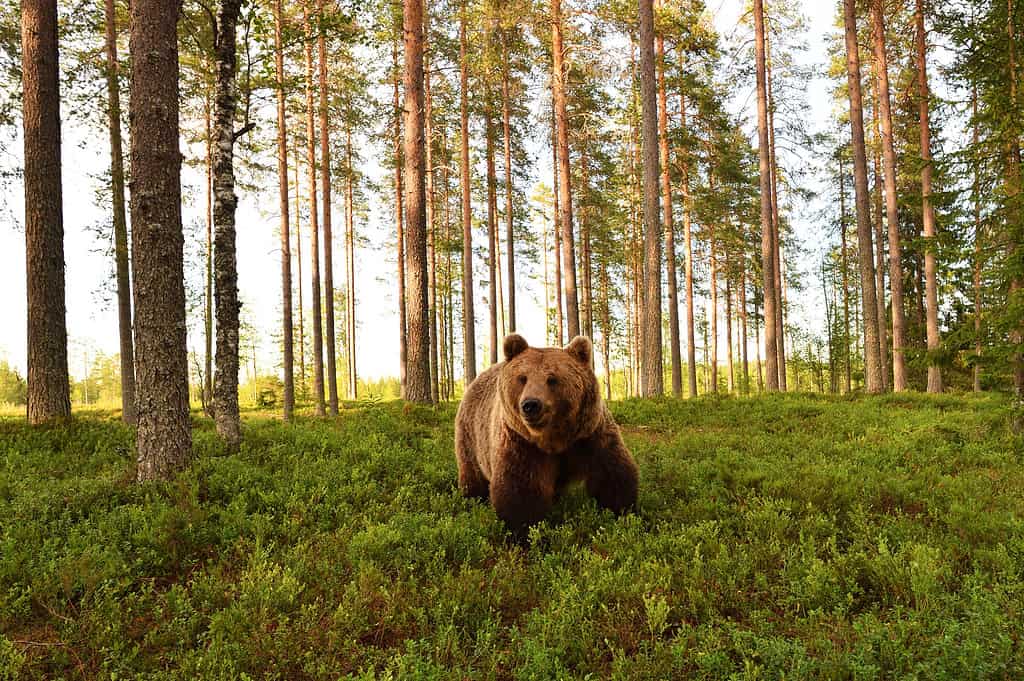
European brown bears are slowly coming back, and locals are able to see wildlife from decades past.
©ErikMandre/iStock via Getty Images
The Bear Wood Program in Bristol, England is taking the initiative to find brown bears and reintroduce them back to the U.K.
Currently, the new bears are living in the British Zoological Society’s Wild Place Project. The location is 7.5 acres of enclosed woodland that familiarizes the bears to the new environment, while still providing the protection and security of their natural habitat. The bears roam the grounds, adapting to the new landscape, environment, and available prey.
In 2019, reintroduction efforts began with four Eurasian brown bears, five wolves, two Eurasian lynxes, and two wolverines. Each species lives in separate zones, reducing the risk of competition or fighting.
Can Visitors View These Bears?
U.K. inhabitants and guests are capable of seeing the bears and other animals from a 13-foot-tall walkway. The path encourages visitors to witness what wildlife in the U.K. was like before human intervention. Observers can see these beautiful creatures from a safe distance.
Bear Wood is part of the Bristol Zoo Project. Tickets are available on site and online. Members of the Bristol Zoo Project get discounts on admissions and fun conservation and educational events.
What Other Animals Went Extinct in the U.K.?
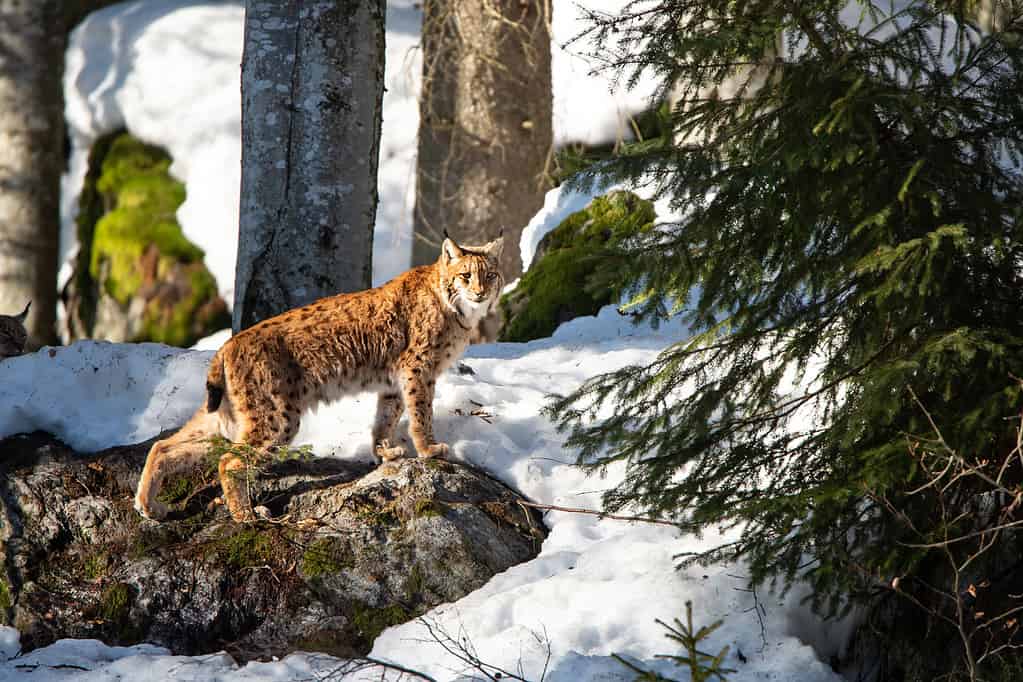
The Eurasian lynx has a stable population across Europe and Asia, but they are extinct in the U.K.
©Alexandra Giese/Shutterstock.com
Unfortunately, brown bears are not the only species that have gone extinct in the U.K. Hundreds of animals are extinct due to centuries of deforestation and urbanization.
A few animals no longer inhabiting the region are:
- Lynx: The British lynx went extinct in 700 A.D. from habitat destruction, overhunting for lynx pelt, and loss of food from dwindling deer populations. The Bear Wood Program is including lynxes in an effort to bring the species back to the area.
- Wolves: The last of the European and Irish wolves died in the 17th century. Competing for prey like deer reduced their numbers while hunters with Irish wolfhounds hunted the breed to extinction. The Bear Wood Program is also introducing wolves to the region.
- Elk: The elk species went extinct around 8,000 years ago. Elk meat and horns are valuable trophies and meat for hunters; their horns are sharpened into tools or home décor.
- Gray Whales: Gray Whales were last seen off the coast of the U.K. around 1610. The whales would migrate across the Atlantic Ocean to breeding grounds in the Baltic Sea to feed. Whalers hunted the species to extinction for their oil, which was used for lighting before electricity.
- Large Copper Butterfly: The lovely copper butterfly possessed small copper-colored wings but went extinct in the 1800s due to habitat loss. Large copper butterflies lived in bogs, wetlands, meadows, and marshes. Their gorgeous wings blended into the environment. When the wetlands and meadows were cut down, the butterfly was unable to reproduce and perished.
Animals Returning to the U.K.
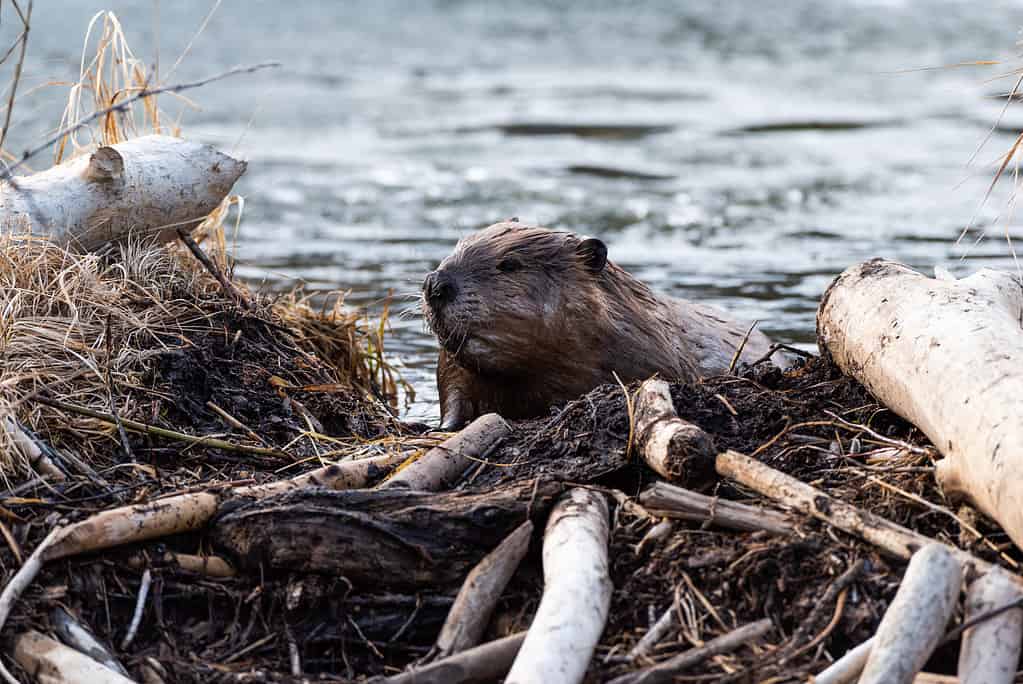
Beavers have been successfully reintroduced to the wild thanks to wildlife preservation programs.
©Dan Pepper/iStock via Getty Images
It is very depressing to think about the number of animals eliminated from the ecosystem due to human intervention. However, all hope is not lost as wildlife conservation laws, breeding programs, and wildlife protection guidelines are saving dozens of species from extinction.
As of 2022, several successful reintroduction efforts brought extinct or endangered animals back from the brink and are now thriving in the U.K.
Successful animals include:
- Bison: Bison went extinct 6,000 years ago from overhunting. However, four bison have been brought to a 519-acre range to safely eat and start reproducing.
- Northern Pool Frog: The northern pool frog went extinct 20 years ago. Recently, 300 tadpoles were released in July 2022 in Norfolk to bring back the population. They are critically endangered and the rarest frog in England.
- Beavers: The Dorset Wildlife Trust has been reintroducing beavers back to several wetlands across the U.K. Such places include Cors Dyfi Nature Reserve, Dorset, Derbyshire, and the Idle Valley Nature Reserve.
- Large Grasshoppers: Approximately 1,000 grasshoppers are living in the Citizen Zoo in Norfolk thanks to the Wildlife Trust and Natural England organizations.
- Ospreys: Recently, the 200th osprey chick was born in 2022, after a 25-year successful reintroduction effort at the Rutland Water Nature Reserve. Ospreys were an extinct species in the region for 150 years.
While it is sad that bears are extinct in the U.K., many efforts are being made to bring them back to the region. Continual efforts from wildlife programs, conservation programs, and zoo programs could bring the bear population back to the U.K. and save the species from endangerment across Europe.
The photo featured at the top of this post is © iStock.com/USO
Thank you for reading! Have some feedback for us? Contact the AZ Animals editorial team.






